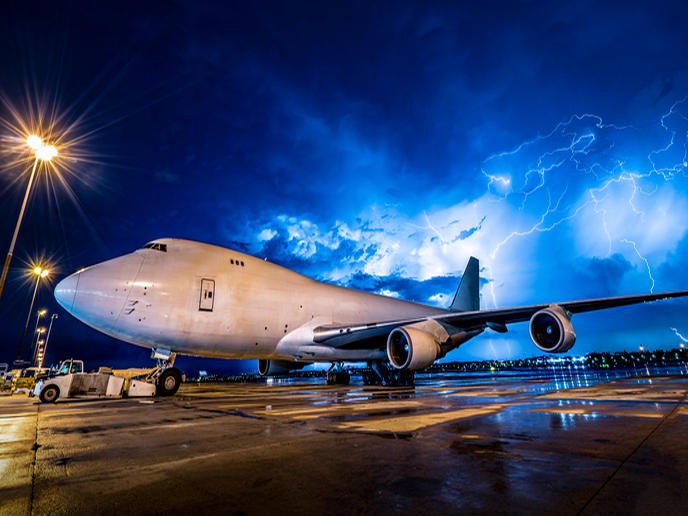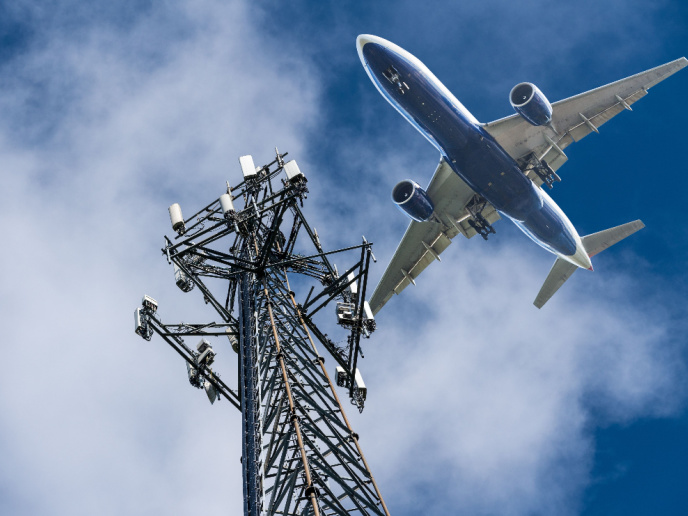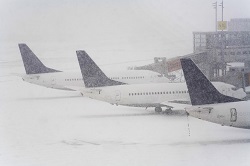AI models help air traffic managers weather big storms
The skies above Europe are more crowded than ever, and unpredictable events such as thunderstorms can sometimes push operations beyond the capacity of controllers. “Air traffic management (ATM) can only safely handle so many aircraft within a given airspace at a given time,” says Marta Sánchez, an ATM R&D engineer at Spain’s CRIDA(opens in new window) (website in Spanish only). “When demand outpaces this capacity, flights get delayed.” With the support of the SESAR Joint Undertaking(opens in new window) set up to modernise Europe’s ATM system, the ISOBAR(opens in new window) (Artificial Intelligence Solutions to Meteo-Based DCB Imbalances for Network Operations Planning) project is leading an effort to use artificial intelligence (AI) and other advanced technologies to better predict – and mitigate – capacity and demand imbalances that can lead to travel disruption.
Using AI to precisely predict thunderstorm activity
One factor that can quickly cause an imbalance in the airspace is weather, particularly thunderstorms. When thunderstorms are forecast, ATM often make the decision to reduce capacity in that airspace, which translates into delays, rerouting and cancellations. “The problem is that today’s forecasts aren’t very accurate,” explains Manuel Soler, an aerospace engineer at Spain’s University Carlos III(opens in new window) who leads ISOBAR’s meteorological forecasting activities. “Although they can tell you when conditions are indicative of a thunderstorm, they can’t pinpoint exactly when and where that storm will happen.” This means ATM end up closing the entire airspace where a thunderstorm might occur, even if it turns out that the storm only affects a small area for a short period of time, says Soler. Having more precise information would allow ATM to make decisions confined to the immediate vicinity of the weather event. The ISOBAR project is using AI, Earth Observation satellite data and advanced weather forecasting to better predict thunderstorm activity, altitude, severity and probability.
Reacting to imbalances in flight capacity
However, a thunderstorm’s impact isn’t limited to the immediate airspace. Disruption at one point tends to cause a domino effect. “When a thunderstorm impacts airspace X, those delayed and rerouted flights will increase demand in airspace Y,” explains Sánchez. “When airspace Y’s capacity is reached, ATM will delay or reroute flights into another airspace, which will impact its demand-capacity balance, and so on.” Here ISOBAR can help. “We created a second model for predicting demand and capacity,” remarks Sánchez. “Using AI, it looks at scheduled flight plans, how flights are rerouted in severe weather, and how those decisions will impact demand and capacity outside the immediately affected airspace.” With this ‘hotspot’ model, used in conjunction with the weather forecasting model, ATM can predict where they can expect to see an imbalance in demand and capacity. ISOBAR then created a third model that provides alternative flight plans for avoiding so-called hotspots. “ATM can use this information, in coordination with the other models, to proactively make decisions that will reduce traffic and congestion and thus mitigate flight disruptions,” concludes Sánchez. The ISOBAR models are currently available as a prototype(opens in new window), which will serve as the basis for developing, testing and validating their use within various ATM services and solutions.







